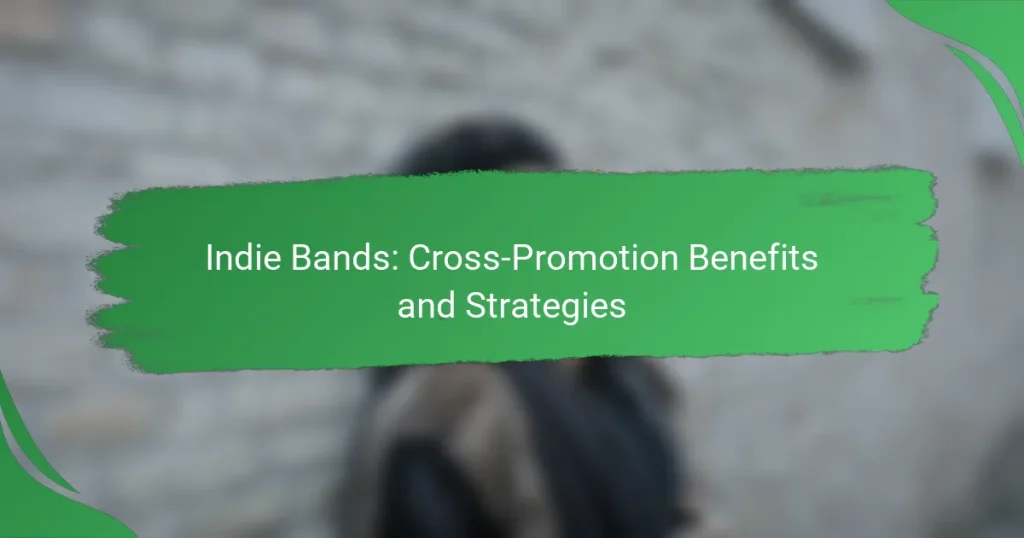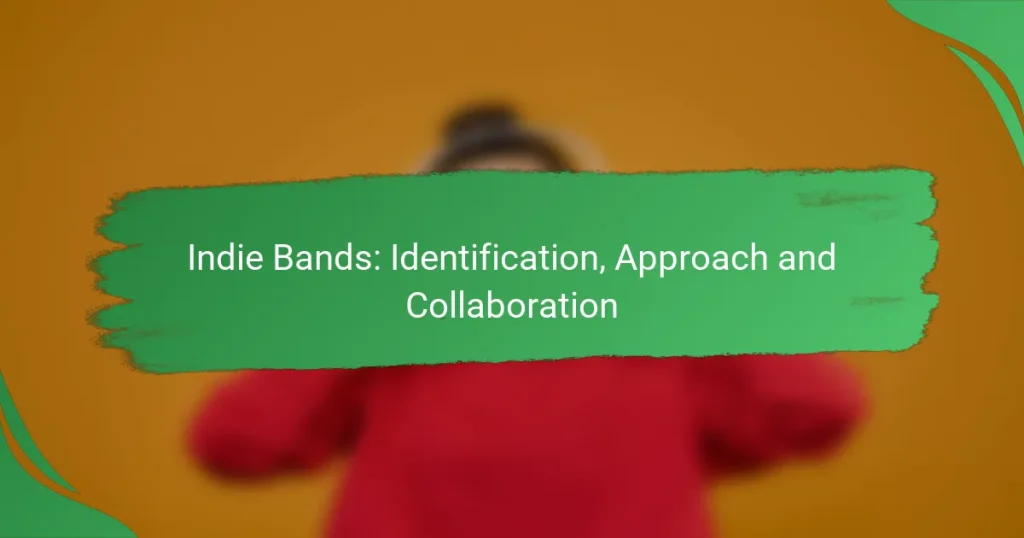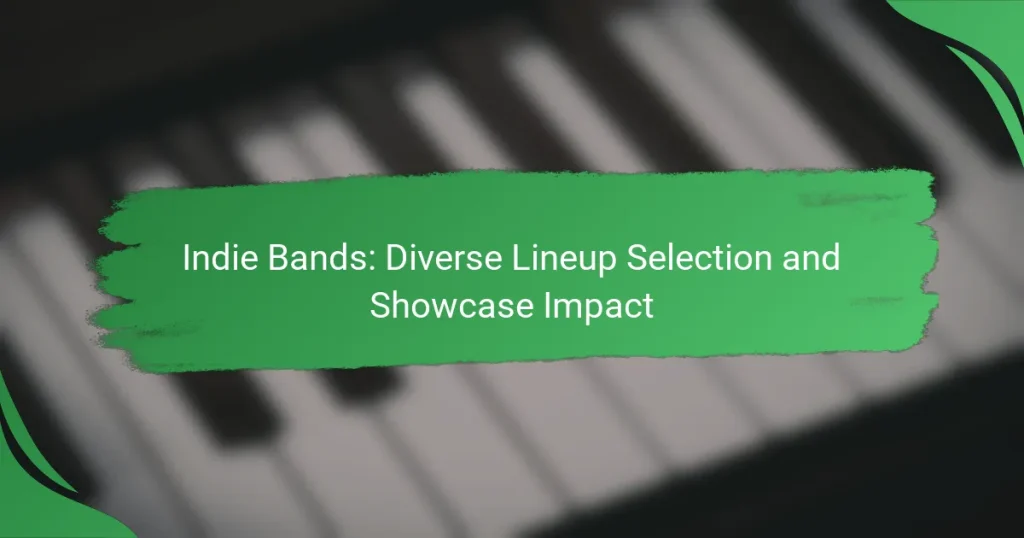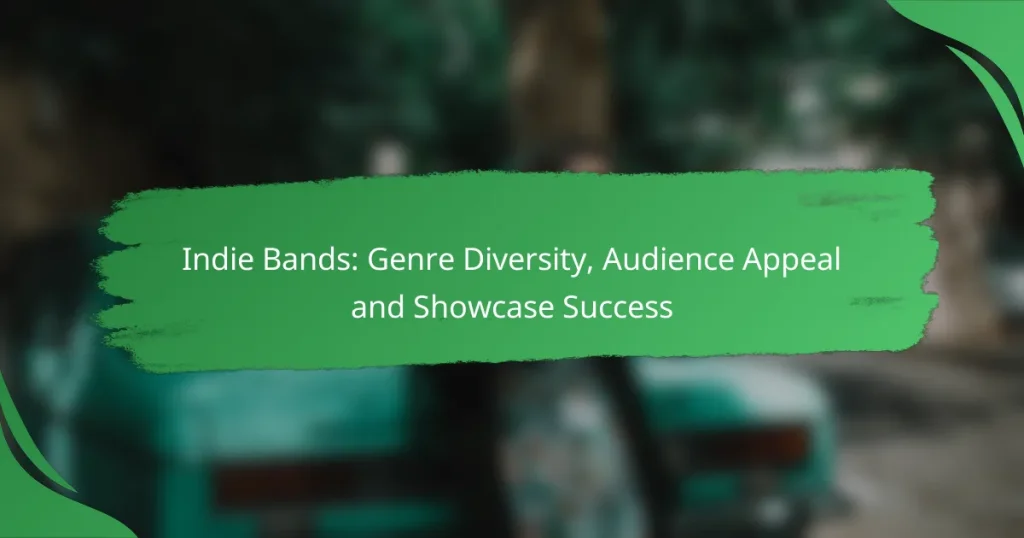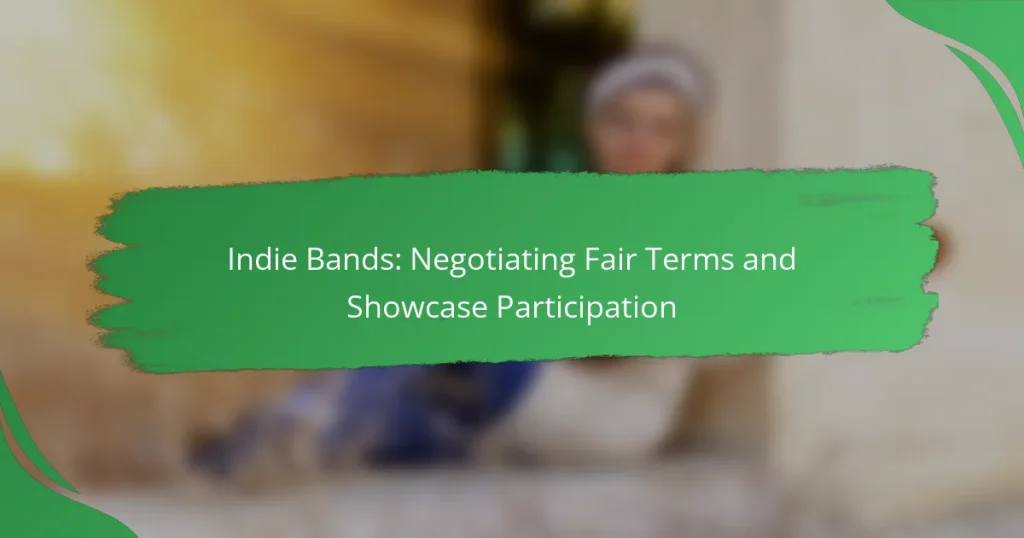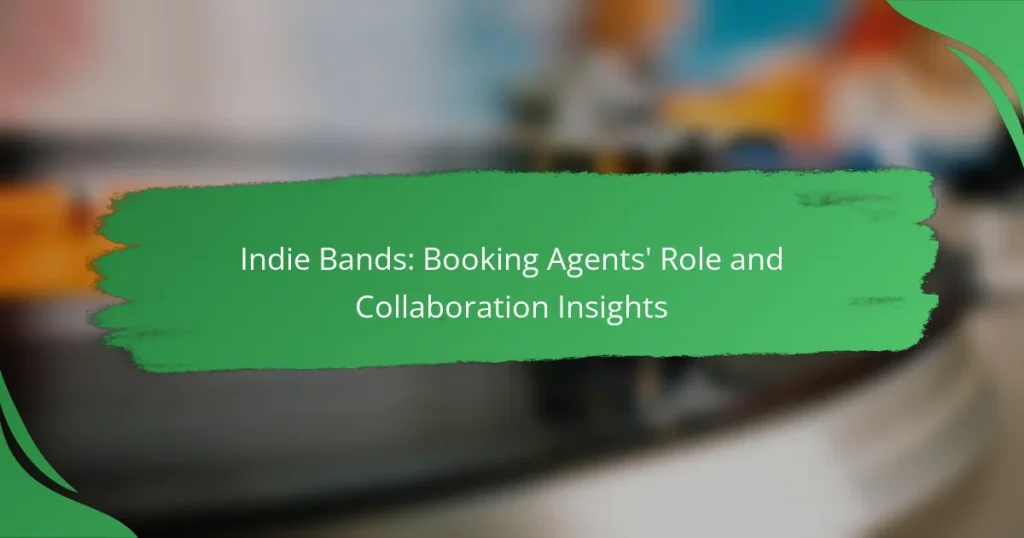Collaborating with indie bands presents a unique opportunity to engage with niche audiences and enhance brand authenticity. By leveraging social media, music collaboration platforms, and local events, you can create meaningful partnerships that elevate your visibility in the music industry. These collaborations not only foster creativity but also open doors for cross-promotion, benefiting both artists and brands alike.
Indie Bands: Sponsorship Opportunities and Collaboration Benefits
Indie Bands: Identification, Approach and Collaboration
Indie Bands: Diverse Lineup Selection and Showcase Impact
Indie Bands: Genre Diversity, Audience Appeal and Showcase Success
Indie Bands: Negotiating Fair Terms and Showcase Participation
Indie Bands: Booking Agents’ Role and Collaboration Insights
How to Collaborate with Indie Bands in the US?
Collaborating with indie bands in the US involves direct engagement and leveraging various platforms to create meaningful partnerships. Effective strategies include outreach through social media, utilizing music collaboration platforms, and hosting local events.
Direct outreach via social media
Social media is a powerful tool for connecting with indie bands. Platforms like Instagram, Twitter, and Facebook allow you to reach out directly, share your work, and engage with their audience. A personalized message can often yield better results than generic outreach.
When reaching out, be clear about what you offer and how it aligns with their music. Avoid sending mass messages; instead, take the time to research the band and tailor your communication to reflect genuine interest.
Utilizing music collaboration platforms
Music collaboration platforms such as SoundBetter, Kompoz, and BandLab facilitate partnerships between artists. These platforms allow you to find musicians with specific skills, whether you need a vocalist, producer, or instrumentalist.
When using these platforms, create a compelling profile that showcases your work and what you seek in a collaboration. Be proactive in reaching out to potential partners and consider setting clear expectations to ensure a smooth working relationship.
Hosting local events and showcases
Hosting local events or showcases is an effective way to connect with indie bands and build your network. These events can range from open mic nights to full-fledged concerts featuring multiple artists. They provide a platform for collaboration and exposure.
When organizing an event, consider partnering with local venues or other artists to share costs and resources. Promote the event through social media and local channels to attract a diverse audience and create a vibrant atmosphere for collaboration.
What are the benefits of collaborating with Indie Bands?
Collaborating with indie bands offers unique advantages such as access to niche audiences, enhanced brand authenticity, and creative cross-promotion opportunities. These benefits can significantly elevate your brand’s visibility and credibility in the music industry.
Access to niche audiences
Indie bands often have dedicated fan bases that are passionate and engaged. By collaborating with these artists, you can tap into their audiences, which may be more receptive to your brand than mainstream consumers. This access can lead to increased brand loyalty and customer engagement.
Consider co-hosting events or creating joint marketing campaigns that highlight both your brand and the indie band. This strategy can help you reach specific demographics, particularly younger consumers who value authenticity and unique experiences.
Enhanced brand authenticity
Partnering with indie bands can enhance your brand’s authenticity by associating it with the grassroots music scene. This connection can resonate well with consumers who appreciate originality and creativity. It positions your brand as one that supports emerging talent and values artistic expression.
To maximize this benefit, ensure that your collaboration feels genuine. Avoid overly commercial approaches; instead, focus on storytelling and shared values that reflect both your brand and the indie band’s ethos.
Creative cross-promotion opportunities
Collaborating with indie bands opens up various creative cross-promotion opportunities. You can co-create content, such as music videos or social media campaigns, that showcases both your brand and the band’s music. This not only diversifies your marketing strategies but also enriches the content you provide to your audience.
Explore options like exclusive merchandise or limited-edition releases that feature both your brand and the band. This approach can create buzz and excitement, encouraging fans to engage with both your products and the music.
What platforms facilitate collaboration with Indie Bands?
Several platforms are designed to facilitate collaboration with indie bands, allowing musicians to connect, share, and promote their work effectively. These platforms cater to various aspects of collaboration, from music distribution to feedback sharing and partnership matching.
Bandcamp for music distribution
Bandcamp is a popular platform for indie bands to distribute their music directly to fans. It allows artists to set their own prices, offering flexibility in monetization, which can range from free downloads to pay-what-you-want models.
Using Bandcamp, bands can create a customizable page to showcase their music, merchandise, and upcoming events. This direct-to-fan approach fosters a closer relationship between artists and their audience, enhancing engagement and support.
SoundCloud for sharing and feedback
SoundCloud serves as a vital platform for indie bands to share their music and receive feedback from listeners and fellow musicians. It supports a wide range of audio formats, making it easy to upload tracks and demos.
Artists can engage with their audience through comments and likes, which can provide valuable insights into what resonates with listeners. Additionally, SoundCloud’s community features allow for collaboration opportunities, as artists can connect with others in their genre.
Collabosaurus for partnership matching
Collabosaurus is a unique platform that helps indie bands find potential collaborators and partners. By creating a profile, artists can specify their needs and interests, making it easier to connect with like-minded musicians and brands.
This platform streamlines the collaboration process by matching artists based on their goals, such as co-writing songs or joint promotional efforts. Utilizing Collabosaurus can save time and enhance the likelihood of successful partnerships in the indie music scene.
What are the key considerations for successful collaborations?
Successful collaborations with indie bands hinge on shared values, clear communication, and measurable objectives. Understanding these key considerations can enhance the partnership and lead to mutual benefits.
Aligning brand values with the band
Aligning brand values with the band is crucial for a cohesive partnership. Both parties should share similar artistic visions and target audiences to ensure authenticity in their collaboration. For instance, a brand focused on sustainability should partner with bands that promote eco-friendly messages in their music.
To assess alignment, consider creating a checklist of core values and mission statements from both the brand and the band. This can help identify common ground and potential areas of conflict early in the collaboration process.
Defining clear roles and expectations
Defining clear roles and expectations is essential to avoid misunderstandings. Each party should know their responsibilities, whether it involves marketing, content creation, or event planning. For example, if a band is responsible for social media promotion, the brand should clarify what resources or support they will provide.
Establishing a written agreement can help solidify these roles. This document should outline tasks, deadlines, and communication protocols to ensure everyone is on the same page throughout the collaboration.
Setting measurable goals for the partnership
Setting measurable goals for the partnership allows both the brand and the band to track progress and success. Goals could include metrics like social media engagement rates, ticket sales for events, or brand awareness surveys. Aim for specific targets, such as increasing followers by 20% within three months.
Regularly reviewing these goals can help adjust strategies as needed. Consider scheduling monthly check-ins to discuss progress and make necessary changes to stay aligned with overall objectives.
How to measure the success of collaborations with Indie Bands?
Measuring the success of collaborations with indie bands involves evaluating engagement metrics, sales data, and audience feedback. These indicators provide insights into the effectiveness and impact of the partnership.
Tracking engagement metrics
Engagement metrics are crucial for assessing how well the collaboration resonates with the audience. Key metrics include social media interactions, streaming numbers, and website traffic. For instance, a successful collaboration may lead to a noticeable increase in followers or shares on platforms like Instagram and Facebook.
To effectively track these metrics, use tools like Google Analytics for website traffic and social media analytics for engagement rates. Regularly monitoring these figures can help identify trends and areas for improvement.
Analyzing sales data from collaborations
Sales data provides a tangible measure of a collaboration’s success, reflecting the financial impact of the partnership. This includes tracking merchandise sales, digital downloads, and ticket sales for joint events. A significant uptick in these areas often indicates a successful collaboration.
Consider setting benchmarks based on previous sales figures to evaluate performance. For example, if a collaboration leads to a 20% increase in merchandise sales compared to solo efforts, it can be deemed successful.
Gathering audience feedback through surveys
Audience feedback is essential for understanding the perception of the collaboration. Surveys can be distributed via email or social media to gather insights on listener satisfaction and preferences. Questions might focus on what fans liked or disliked about the collaboration.
To maximize response rates, keep surveys concise and incentivize participation with discounts or exclusive content. Analyzing this feedback can reveal valuable insights that inform future collaborations and marketing strategies.
What are the challenges of collaborating with Indie Bands?
Collaborating with indie bands often presents unique challenges, primarily due to their limited resources and varying levels of experience. These factors can impact project timelines, quality of output, and overall communication.
Limited resources and budgets
Indie bands typically operate with constrained budgets, which can limit their ability to invest in high-quality production, marketing, and promotion. This often means that both parties need to be flexible and creative in finding solutions that fit within financial constraints.
When collaborating, it’s essential to establish clear expectations regarding budget and resource allocation upfront. For example, consider sharing costs for studio time or equipment rental, or explore alternative options like home recording setups that can reduce expenses.
Be mindful of potential pitfalls such as underestimating costs or overcommitting resources. A simple checklist can help: define budget limits, agree on shared expenses, and regularly review financial commitments throughout the collaboration.
